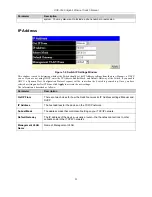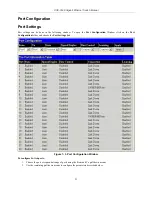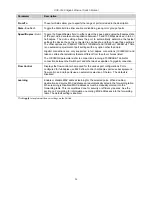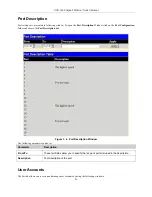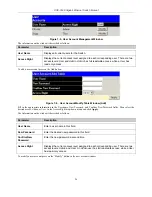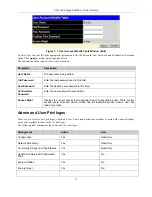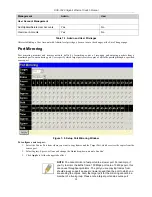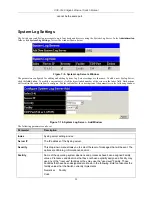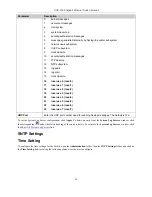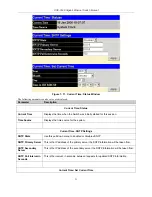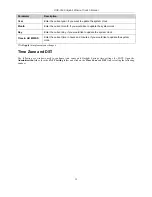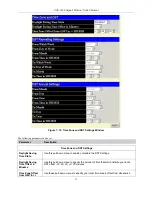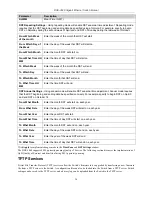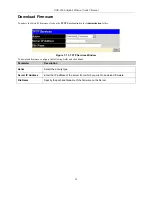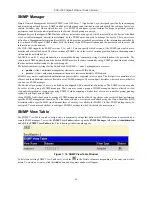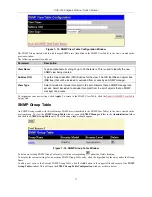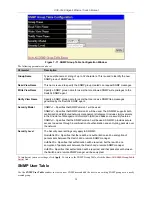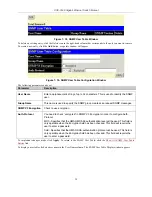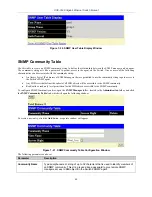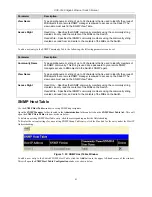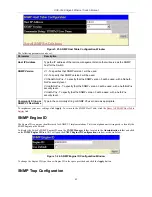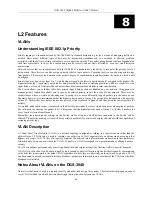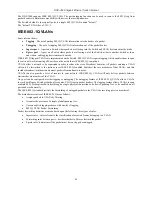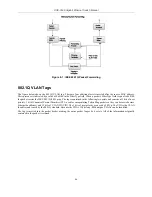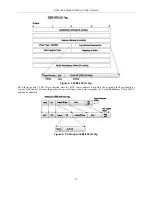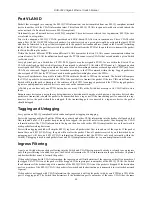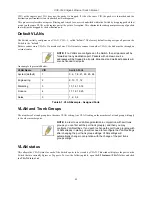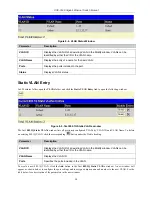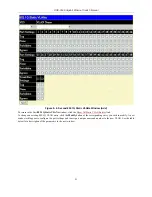
DGS-3048 Gigabit Ethernet Switch Manual
SNMP Manager
Simple Network Management Protocol (SNMP) is an OSI Layer 7 (Application Layer) designed specifically for managing
and monitoring network devices. SNMP enables network management stations to read and modify the settings of gateways,
routers, Switches, and other network devices. Use SNMP to configure system features for proper operation, monitor
performance and detect potential problems in the Switch, Switch group or network.
Managed devices that support SNMP include software (referred to as an agent), which runs locally on the device. A defined
set of variables (managed objects) is maintained by the SNMP agent and used to manage the device. These objects are
defined in a Management Information Base (MIB), which provides a standard presentation of the information controlled by
the on-board SNMP agent. SNMP defines both the format of the MIB specifications and the protocol used to access this
information over the network.
The DGS-3048 supports the SNMP versions 1, 2c, and 3. You can specify which version of the SNMP you want to use to
monitor and control the Switch. The three versions of SNMP vary in the level of security provided between the management
station and the network device.
In SNMP v.1 and v.2, user authentication is accomplished using 'community strings', which function like passwords. The
remote user SNMP application and the Switch SNMP must use the same community string. SNMP packets from any station
that has not been authenticated are ignored (dropped).
The default community strings for the Switch used for SNMP v.1 and v.2 management access are:
•
public
- Allows authorized management stations to retrieve MIB objects.
•
private
- Allows authorized management stations to retrieve and modify MIB objects.
SNMPv3 uses a more sophisticated authentication process that is separated into two parts. The first part is to maintain a list
of users and their attributes that are allowed to act as SNMP managers. The second part describes what each user on that list
can do as an SNMP manager.
The Switch allows groups of users to be listed and configured with a shared set of privileges. The SNMP version may also
be set for a listed group of SNMP managers. Thus, you may create a group of SNMP managers that are allowed to view
read-only information or receive traps using SNMPv1 while assigning a higher level of security to another group, granting
read/write privileges using SNMPv3.
Using SNMPv3 individual users or groups of SNMP managers can be allowed to perform or be restricted from performing
specific SNMP management functions. The functions allowed or restricted are defined using the Object Identifier (OID)
associated with a specific MIB. An additional layer of security is available for SNMPv3 in that SNMP messages may be
encrypted. To read more about how to configure SNMPv3 settings for the Switch read the next section.
SNMP View Table
The SNMP View Table is used to assign views to community strings that define which MIB objects can be accessed by a
remote SNMP manager. To view the
SNMP View Table
window, open the
SNMP Manager
folder under
Administration
and click the
SNMP View Table
entry. The following window should appear:
Figure 7- 14. SNMP View Table Window
To delete an existing SNMP View Table entry, click the
in the Delete column corresponding to the entry you wish to
delete. To create a new entry, click the
Add
button and a separate window will appear.
36
Summary of Contents for D DGS-3048 DGS-3048
Page 1: ...D Link DGS 3048 Managed 48 Port Gigabit Ethernet Switch Manual ...
Page 2: ......
Page 29: ...DGS 3048 Gigabit Ethernet Switch Manual Figure 6 1 Enter Network Password Dialog Box 17 ...
Page 146: ......
Page 147: ......

